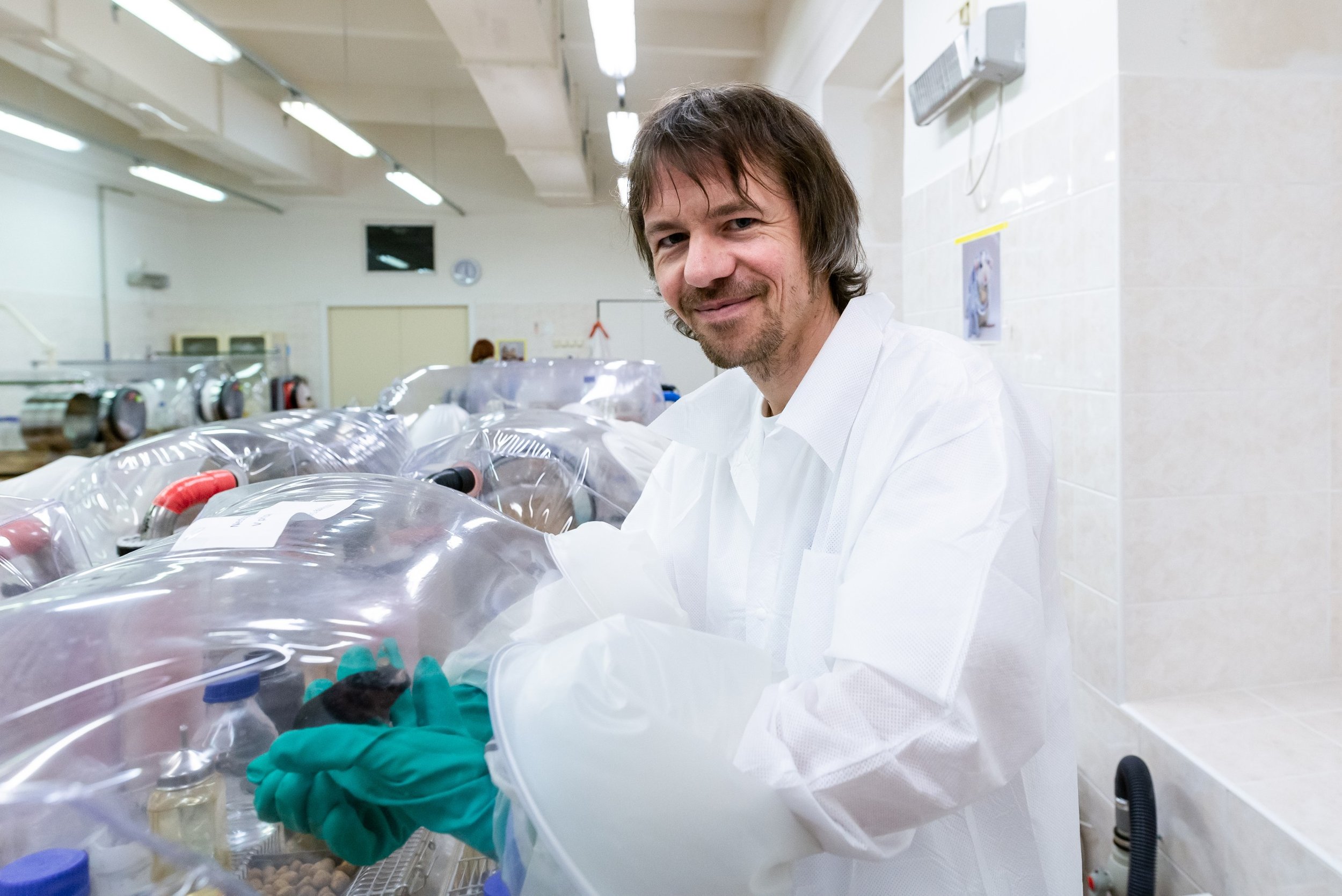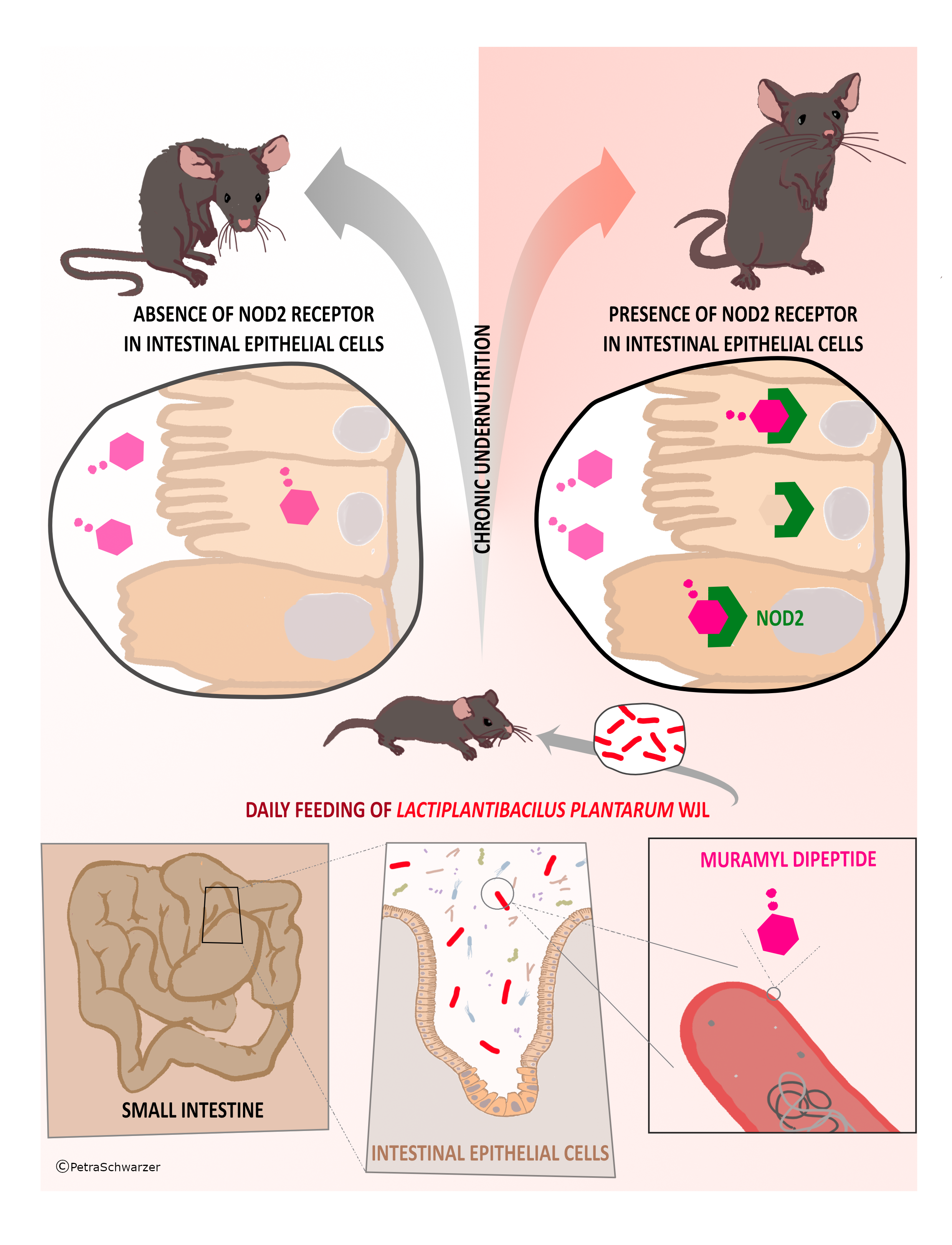Uncovering the potential of probiotic bacteria to combat undernutrition
Eisha Mhatre
“Nearly half of all deaths in children under 5 are attributed to undernutrition” - UNICEF data March 2023
Not meeting the nutrient requirement can have a lasting impact on infant growth and cause several irreversible changes, such as stunted growth, disrupted immune functions, or even impaired brain development. While major world organizations are implementing solutions like good distribution of resources and sustainable farming to combat hunger problems around the world, scientists are finding new ways to fight nutrient deficiencies and, once again, microbes come to the rescue.
Czech and French research groups recently discovered that a daily dose of bacterial strain, Lactiplantibacillus plantarum (previously genus Lactobacillus), to undernourished infant mice can promote their growth. We speak to the author, Dr. Martin Schwarzer, to bring you the story behind this discovery.
Back in 2010, as a Ph.D. student in the Laboratory of Gnotobiology at the Institute of Microbiology in the Czech Republic, Martin worked on developing a potential mucosal vaccine to prevent allergies using an allergen-producing L. plantarum strain. During this study, Martin observed that dosing germ-free (organisms free of any natural microbial association) mice with the probiotic bacterial strain improved growth. His supervisor, Dr. Hana Kozakova, discussed these observations at a conference in Spain with Dr. François Leulier, who had found similar results in drosophila. Moreover, the drosophila isolated L. plantarum strain, Lp WJL, also shortened the maturation time in undernourished germ-free drosophila larvae.
Subsequent discussions led Martin to investigate the effects of Lp WJL in undernourished germ-free and gnotobiotic infant mice. “Indeed, we were able to reproduce the results obtained in the fly model and establish that Lp WJL rescues growth in undernourished germ-free mice infants,” says Martin, who joined Dr Leulier in Lyon, France, as a postdoc to further pinpoint the mechanism behind this improved growth.
Source: Martin Schwarzer
Reflecting on his postdoctoral life in France, Martin adds, “We moved to France as a family with two kids, and in France, one cannot survive without French. Even though in the lab we spoke English, one needs to be familiar with French for day-to-day activities. That was a struggle at first. My kids, however, picked up the language and soon helped us with the translations”.
During his postdoc, he was successful at demonstrating increased production of growth factor IGF-1 ( the main player in organismal growth) following colonization of undernourished germ-free mice with Lp WJL. Intrigued by the question of whether Lp WJL would exhibit the same effect in conventional mice, where the bacteria would have to compete with other gut microbes, he decided to continue this study when he became an assistant professor back in the Czech Republic. “At that time, we already had promising results after feeding conventional mice with Lp WJL, and Francois and I agreed to collaboratively invest time and resources to advance the research after my return to the Czech Republic,” says Martin.
The decision to return back was a logical one. “Here, we have an excellent R&D facility in the institute where we collaborate with different academic partners and companies. The institute is located in a very remote area of the country and has been breeding germ-free animals since the 1960s. It is one of the oldest (if not the only one) gnotobiotic facilities in Europe”, states Martin.
The recent update in the study brought to light a surprising discovery: even dead Lp WJL cells or isolated cell wall were able to elicit the response. In order to decipher the unknown receptor in the host that interacts with the bacterial cell wall, they employed several knock-out mice. “Eventually, we found it: it was NOD2, an innate immunity receptor, that plays a pivotal role in sensing of Lp WJL bacteria and isolated cell wall”, adds Martin.
Graphical summary (Source: Martin Schwarzer)
When they submitted their findings to Science for publication, the reviewers requested more details about the specific tissue and cells within the hosts where NOD2 likely interacts with bacteria. “We had to employ the Cre-lox system and order mice in which we could induce tissue-specific deletion of the NOD2 gene. But then, the pandemic hit, and airplanes stopped. You won’t believe it– our mice models had to be transported from France to the Czech Republic by car,” exclaims Martin.
Ultimately it was found that the interaction between NOD2 and Lp WJL occurred in the intestinal epithelial cells. This interaction activated the NOD2 signaling pathway, leading to improved cell proliferation and enhanced nutrient absorption in the small intestine along with increased levels of IGF-1.
While the above study identifies the specific bacterium, research in the laboratory of Prof. Jeffery Gordon focuses on therapeutic, local food sources that help maintain healthy gut-bacterial core communities. These core communities also activate IGF-1-mediated growth. Clinical trials underway are studying if these microbial communities can be transferred to other patients to combat nutrient deficiencies. These findings hold great promise in addressing the pressing issues of global child hunger and malnutrition.


